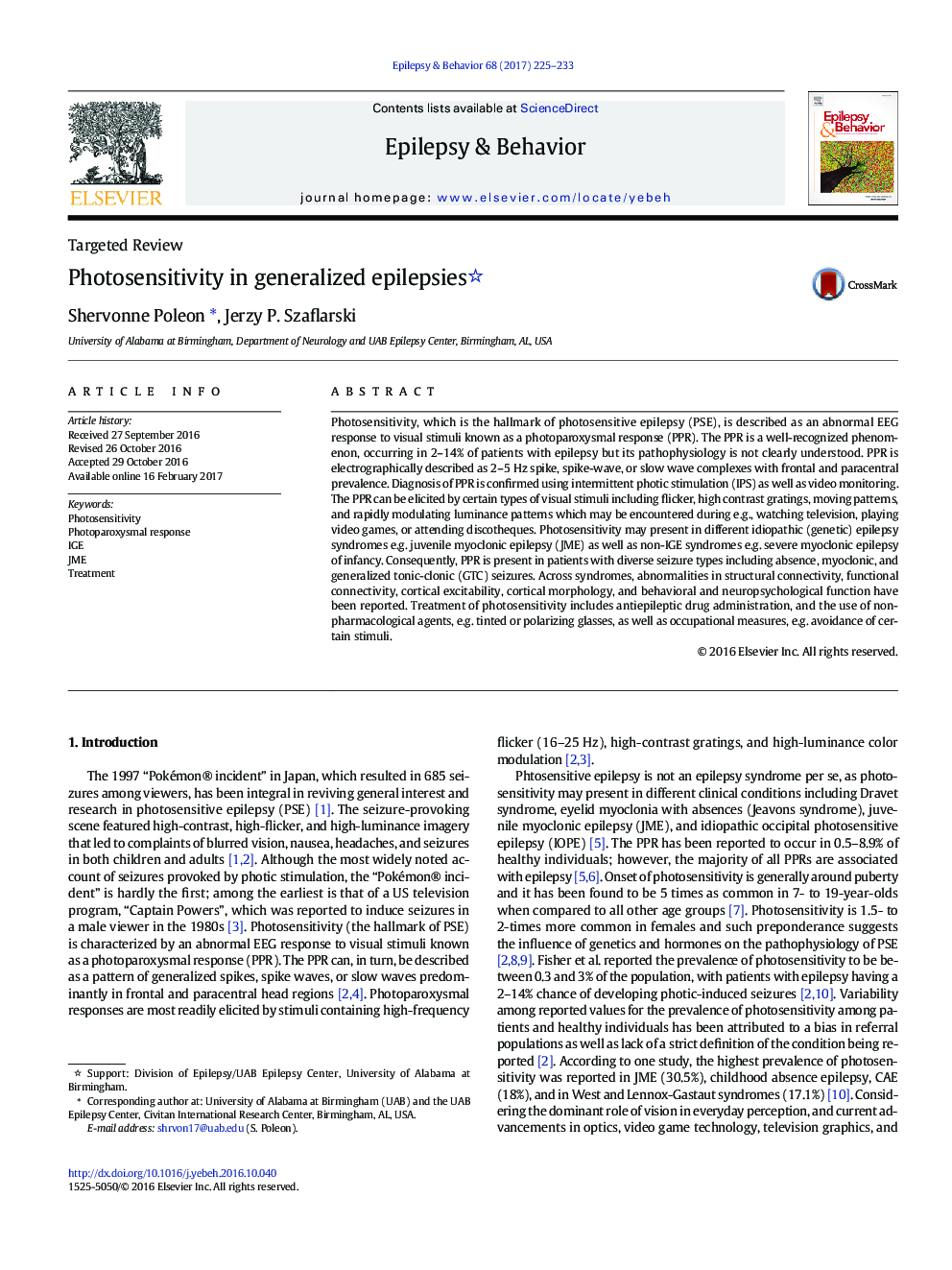| Article ID | Journal | Published Year | Pages | File Type |
|---|---|---|---|---|
| 5628032 | Epilepsy & Behavior | 2017 | 9 Pages |
â¢Etiology of photosensitivity is multifactorial.â¢Photosensitivity is not limited to IGEs.â¢Discrete neuroimaging differences between photosensitive and non-photosensitive IGEs exist.â¢Treatments include pharmacological and non-pharmacological measures.
Photosensitivity, which is the hallmark of photosensitive epilepsy (PSE), is described as an abnormal EEG response to visual stimuli known as a photoparoxysmal response (PPR). The PPR is a well-recognized phenomenon, occurring in 2-14% of patients with epilepsy but its pathophysiology is not clearly understood. PPR is electrographically described as 2-5Â Hz spike, spike-wave, or slow wave complexes with frontal and paracentral prevalence. Diagnosis of PPR is confirmed using intermittent photic stimulation (IPS) as well as video monitoring. The PPR can be elicited by certain types of visual stimuli including flicker, high contrast gratings, moving patterns, and rapidly modulating luminance patterns which may be encountered during e.g., watching television, playing video games, or attending discotheques. Photosensitivity may present in different idiopathic (genetic) epilepsy syndromes e.g. juvenile myoclonic epilepsy (JME) as well as non-IGE syndromes e.g. severe myoclonic epilepsy of infancy. Consequently, PPR is present in patients with diverse seizure types including absence, myoclonic, and generalized tonic-clonic (GTC) seizures. Across syndromes, abnormalities in structural connectivity, functional connectivity, cortical excitability, cortical morphology, and behavioral and neuropsychological function have been reported. Treatment of photosensitivity includes antiepileptic drug administration, and the use of non-pharmacological agents, e.g. tinted or polarizing glasses, as well as occupational measures, e.g. avoidance of certain stimuli.
